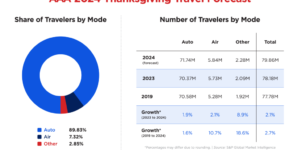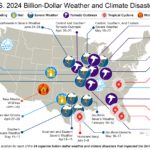According to Allianz’s Risk Barometer 2023, cyber incidents and business interruption rank as the biggest company concerns for the second year in a row.
At the same time, macroeconomic developments such as inflation, financial market volatility and a looming recession, as well as the impact of the energy crisis, are the top risers in this year’s list of global business risks.
“For the second year in a row, the Allianz Risk Barometer shows that companies are most concerned about mounting cyber risks and business interruption,” said AGCS Chief Executive Officer Joachim Mueller. “At the same time, they see inflation, an impending recession and the energy crisis as immediate threats to their business. Companies—in Europe and in the U.S. in particular—worry about the current ‘permacrisis’ resulting from the consequences of the pandemic and the economic and political impact from ongoing war in Ukraine. It’s a stress test for every company’s resilience.”
He added the positive news is that, as an insurer, “we see continuous improvement in this area among many of our clients, particularly around making supply chains more failure-proof, improving business continuity planning and strengthening cyber controls. Taking action to build resilience and de-risk is now front and center for companies, given the events of recent years.”
This year’s Allianz Risk Barometer is the 12th annual business risk ranking compiled by Allianz Group’s corporate insurer, Allianz Global Corporate & Specialty (AGCS), together with other Allianz entities. The report incorporates the views of more than 2,700 risk management experts in 94 countries and territories, including CEOs, risk managers, brokers and insurance experts.
Allianz reported the top four 2023 risks are broadly consistent across all company sizes globally, as well as across core European economies and the U.S. (energy crisis excepted). Risk concerns for businesses in Asia Pacific and African countries show some deviation, reflecting the different impact of the ongoing war in Ukraine and its economic and political repercussions.
Compared to last year, natural catastrophes fell three spots on the global list, and climate change dropped one. Pandemic outbreak ranked at No. 4 in 2022 and came in at No. 13 this year.
Political risks and violence entered the top 10 global risks in 2023, while shortage of skilled workforce rose to No. 8. Allianz reported that changes in legislation and regulation remain a key risk at No. 5, while fire and explosion dropped two positions from 2022.
Digital and disruption dangers
Allianz reported that cyber incidents, such as IT outages, ransomware attacks or data breaches, rank as the most important risk globally for the second year in succession—the first time this has occurred. Cyber incidents also rank as the top peril in 19 different countries, including Canada, France, Japan, India and the UK. It is the risk that most worries small companies.
“For many companies, the threat in cyberspace is still higher than ever, and cyber insurance claims remain at a high level,” said Shanil Williams, AGCS chief underwriting officer, corporate, responsible for cyber underwriting. “Large companies have become accustomed to being targeted, and those with adequate cybersecurity are able to repel most attacks more effectively. Increasingly, more small and midsize businesses are also being impacted. These tend to underestimate their exposure and need to continuously invest in strengthening their cyber control framework.”
According to the Allianz Cyber Center of Competence, the frequency of ransomware attacks remains elevated in 2023, while the average cost of a data breach is at an all-time high at $4.35 million and expected to surpass $5 million in 2023.
The conflict in Ukraine and wider geopolitical tensions are heightening the risk of a large-scale cyber attack by state-sponsored actors. In addition, there is also a growing shortage of cybersecurity professionals, which brings challenges when it comes to improving security.
Allianz forecasts that for many countries, 2023 is likely to be another year of heightened risks for business interruption because many business models are vulnerable to sudden shocks and change, which in turn impact profits and revenues. Ranking No. 2 globally, business interruption is the No. 1 risk in countries such as Brazil, Germany, Mexico, Netherlands, Singapore, South Korea, Sweden and the U.S.
The scope of disruptive sources is wide. Cyber is the cause of business interruption that companies fear most (45 percent of responses); the second most important cause is the energy crisis (35 percent), followed by natural catastrophes (31 percent). The skyrocketing cost of energy has forced some energy-intensive industries to use energy more efficiently, move production to alternative locations or even consider temporary shutdowns.
The resulting shortages threaten to cause supply disruption across critical industries in Europe, including food, agriculture, chemicals, pharmaceuticals, construction and manufacturing, although warm winter conditions in Europe and stabilization of the price of gas is helping to ease the energy situation.
A possible global recession is another likely source of disruption in 2023, with potential for supplier failure and insolvency. This is a particular concern for companies with single or limited critical suppliers. According to Allianz Trade, global business insolvencies are likely to rise significantly in 2023: +19 percent.
Macroeconomic malaise
Allianz reported that macroeconomic developments such as inflation or economic and financial market volatility rank as the third top risk for companies globally in 2023, up from No. 10 in 2022. It marks the first time this risk has appeared in the top three in a decade.
All three major economic areas—the United States, China and Europe—are in a crisis mode at the same time, albeit for different reasons, according to Allianz Research, which forecasts recession in Europe and the U.S. in 2023. Inflation is a particular concern as it eats into the price structure and profitability margins of many companies. Like the real economy, the financial markets are facing a difficult year, as central banks drain excess system-wide liquidity and trading volumes even in historically liquid markets decline.
“2023 will be a challenging year; in purely economic terms, it is likely to be a year to forget for many households and companies. Nevertheless, there is no reason to despair,” said Ludovic Subran, chief economist at Allianz. “For one thing, the turnaround in interest rates is helping, not least for millions of savers. The medium-term outlook is also much brighter, despite—or rather because of—the energy crisis. The consequences, beyond the expected recession in 2023, are already becoming clear: a forced transformation of the economy in the direction of decarbonization as well as increased risk awareness in all parts of society, strengthening social and economic resilience.”
Risk risers and fallers
The energy crisis is the biggest risk riser in the Allianz Risk Barometer. It appears, for the first time, at the No. 4 ranking. Some industries, such as chemicals, fertilizers, glass and aluminum manufacturing, can be reliant on a single source of energy—Russian gas in the case of many European countries—and are therefore vulnerable to disruption to energy supply or price increases.
If such base industries struggle, repercussions can be felt further down the value chain in other sectors. According to Allianz Trade, the energy crisis will remain the largest profitability shock for European countries in particular. At current levels, energy prices would wipe out the profits of most non-financial corporates as pricing power is diminishing amid slowing demand.
Driven by 2022 being another year of turmoil with conflict and civil unrest dominating the news, political risks and violence is a new entry at No. 10. Aside from war, companies are also concerned about increasing disruption from strikes, riots and civil commotion activity as the cost-of-living crisis affects many countries.
Despite dropping in the ranking year-on-year, natural catastrophes and climate change remain major concerns for businesses. In a year that included Hurricane Ian, record-breaking heatwaves, droughts and winter storms around the world, and $100 billion-plus of insured losses, they still rank in the top seven global risks.





















 Florida Home Sales Decline Amid Hurricane Recovery, Surging HOA and Insurance Costs
Florida Home Sales Decline Amid Hurricane Recovery, Surging HOA and Insurance Costs  More Than Half of All Employees in Finance, Insurance Work Remotely: Triple-I
More Than Half of All Employees in Finance, Insurance Work Remotely: Triple-I  The U.S. Has Sustained 24 Billion-Dollar Disasters in 2024
The U.S. Has Sustained 24 Billion-Dollar Disasters in 2024  New York Judge Rejects Climate Concerns in Effort to Shutter Bitcoin Mine
New York Judge Rejects Climate Concerns in Effort to Shutter Bitcoin Mine 